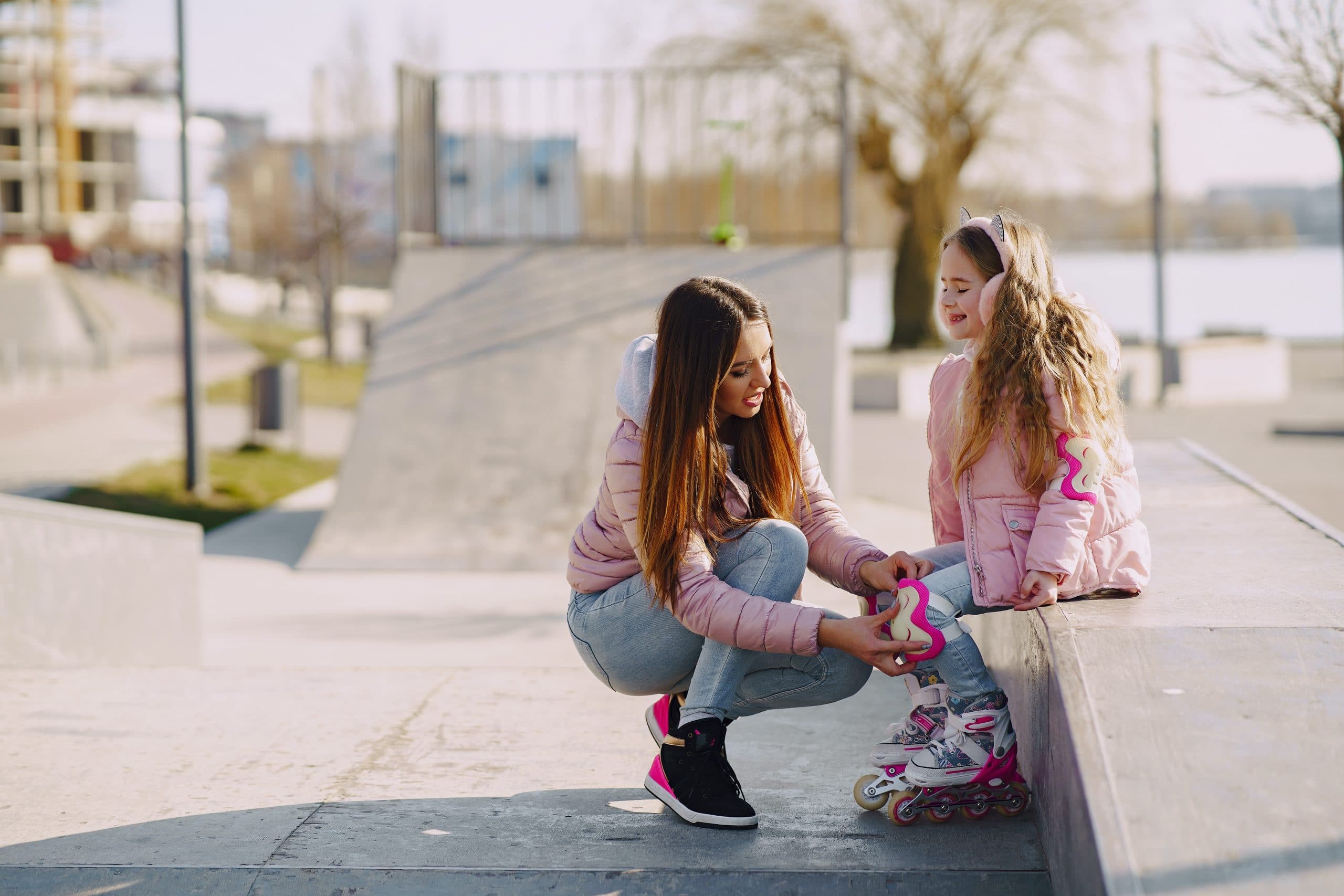
Skate Safely with This Essential Roller Skating Gear
Falling down is part of roller skating, and you should definitely learn how to fall safely on roller skates. However, it can take a while to internalize the best ways to fall, so why not protect yourself in the meantime?
If you’re new to skating (or just coming back after many years), you’re definitely going to want to wear protective skate gear while you get the hang of it. Knee pads, elbow pads, wrist guards, and a helmet are standard. If you want to go the extra mile, you could follow the lead of roller derby players and add a mouthguard. There are even padded shorts out there to protect your tailbone!
Many skaters forego some or all of that safety gear inside the skating rink once they’re more comfortable on skates, but it’s also totally fine to keep wearing it. The skating rink floor is pretty hard, after all! But when it comes to skating outdoors, you should always gear up before you go. Skating outside not only exposes you to rough, cracked, and otherwise unpredictable surfaces, but also carries the added risks of traffic, other pedestrians, hills, etc. Ready to roll? Here’s what you need:
Elbow and Knee Pads
Knees and elbows are particularly prone to injury in a fall, and bruising or spraining one can really hurt! Roller skating pads are typically constructed from a soft sleeve or strap with some padding and a hard outer shell—sort of like a helmet for your knee or elbow.
When buying knee and elbow pads, make sure you choose the correct sizes. To measure your elbow size, use a soft measuring tape or string to determine the circumference around your arm about an inch above your elbow. For a knee measurement, use the measuring tape to get the circumference around the leg 1-2 inches above the knee. Look for good, sturdy straps to keep them in place and adjust for comfort.
Wrist Guards
Falling onto your wrists can result in a sprain, fracture, or full-on broken bone. That’s why so many skaters choose to wear wrist guards! While you should always try to avoid catching yourself on your wrists when falling, using a wrist guard can reduce the risk of serious injury.
There are two main kinds of wrist guards—slip-on and wrap. Slip-on wrist guards slip over your hand, similar to a fingerless glove, but with plenty of rigid support. Wrap wrist guards also contain rigid supports, but instead of slipping on like a glove, you wrap them around your hand and wrist, then secure them with straps to get a closer fit.
Helmets
Wearing a helmet is a smart move, whether you’re roller skating or biking. Helmets protect against everything from cuts and bruises to concussions and serious brain injury. To measure for helmet size, use your soft tape measure to wrap around your head. Position the tape about 2 finger widths over your eyebrows and 1-2 above your ears. The tape should be tight against the skin, but not constricting. You just want the most accurate measurement possible without it being too tight. Look for a helmet that sits low on your forehead, is snug but not uncomfortable, and sits flat on the top of the head without tilting back/up. The side straps should form a Y shape with the straps joining just below your ear.
Leave a Reply